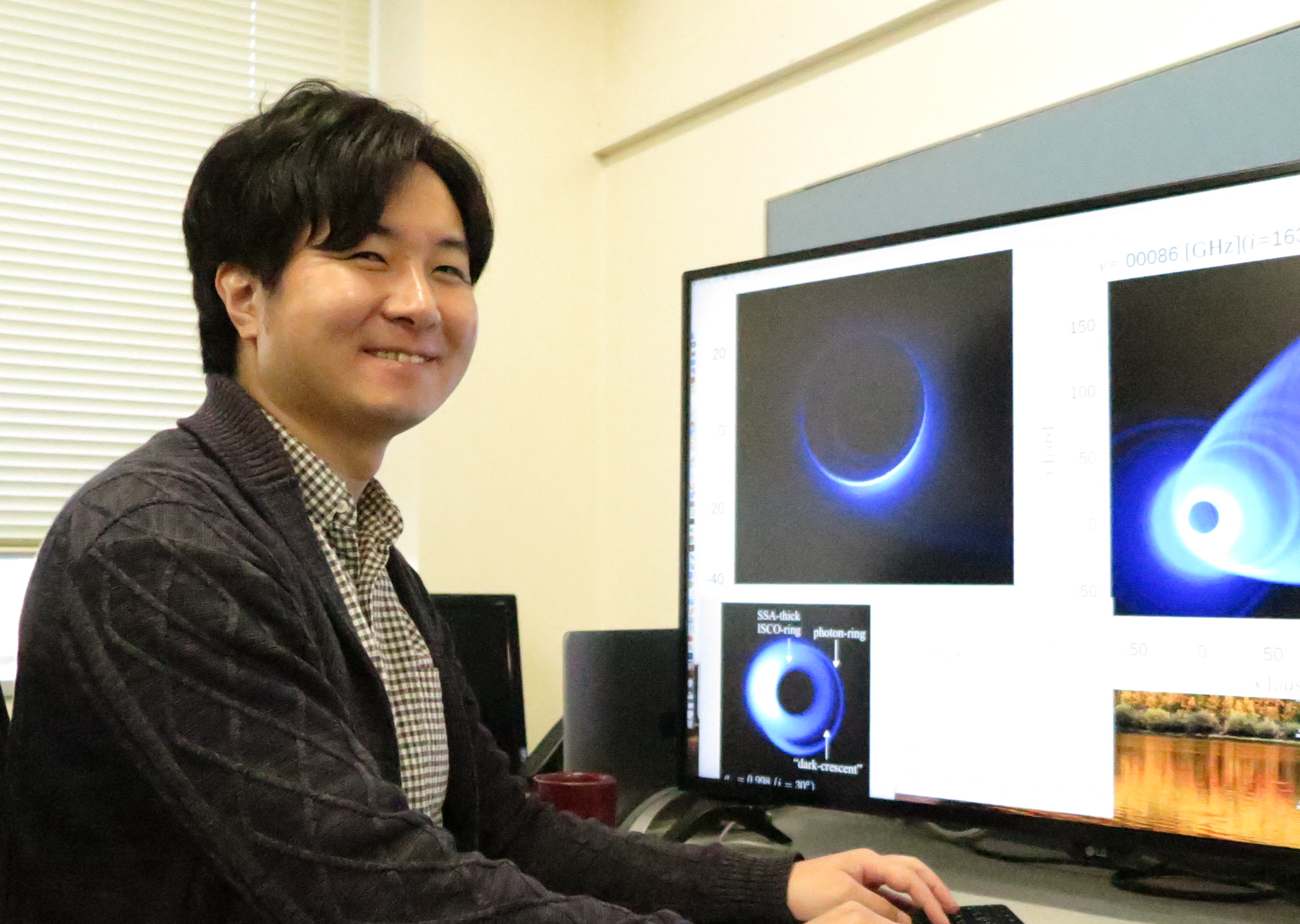The Event Horizon Telescope (EHT) Collaboration, the international research team that imaged a black hole, won the 2020 Breakthrough Prize in Fundamental Physics.
The Breakthrough Prize is an annual award for important achievements in the Life Sciences, Fundamental Physics, and Mathematics presented by the Breakthrough Prize Foundation and its founding sponsors. The EHT team succeeded in capturing the first image of a “black hole shadow” by combining eight radio telescopes located around the world. (Astronomers Capture First Image of a Black Hole, April 10, 2019) This result was recognized as the answer to an important scientific question, “What does a black hole look like?” The 347 authors of the six papers describing the first image of the black hole shadow published in April 2019 were listed as the recipients of this award, including Tomohisa Kawashima, a Project Assistant Professor at the Center for Computational Astrophysics of NAOJ.
The theory and simulation research working group including Kawashima performed comparative verification between the observed image of the black hole shadow and the simulation results. Their efforts made it possible to estimate the mass of the supermassive black hole at the center of M87, and provided insights into the rotation of gas around the black hole and the spin of the black hole itself. Kawashima contributed to the development and validation of the simulation code for the radiation transfer considering general relativistic effects using the NAOJ supercomputer “ATERUI II.” (Planet-scale Telescope and Supercomputers Uncover a Black Hole, April 9, 2019)
Kawashima says, “I am really pleased to receive this great public recognition as a collaborator. Hereafter, I expect that black hole astrophysics, in particular the physics of accretion flows and the relativistic jets in the vicinity of the black hole and their relation to the black-hole spin, will be explored and understood via multiwavelength observations, theoretical studies, and numerical simulations of black holes.”
The awards ceremony was held at the NASA Aims Research Center in Mountain View, California and the EHT Collaboration team received $3 million.
(November 8, 2019)
Related Links
- NAOJ: 2020 Breakthrough Prize in Fundamental Physics Awarded for First Image of a Black Hole
- ALMA Telescope: Breakthrough Prize in Fundamental Physics Awarded to ALMA Staff for the First Black Hole Picture


